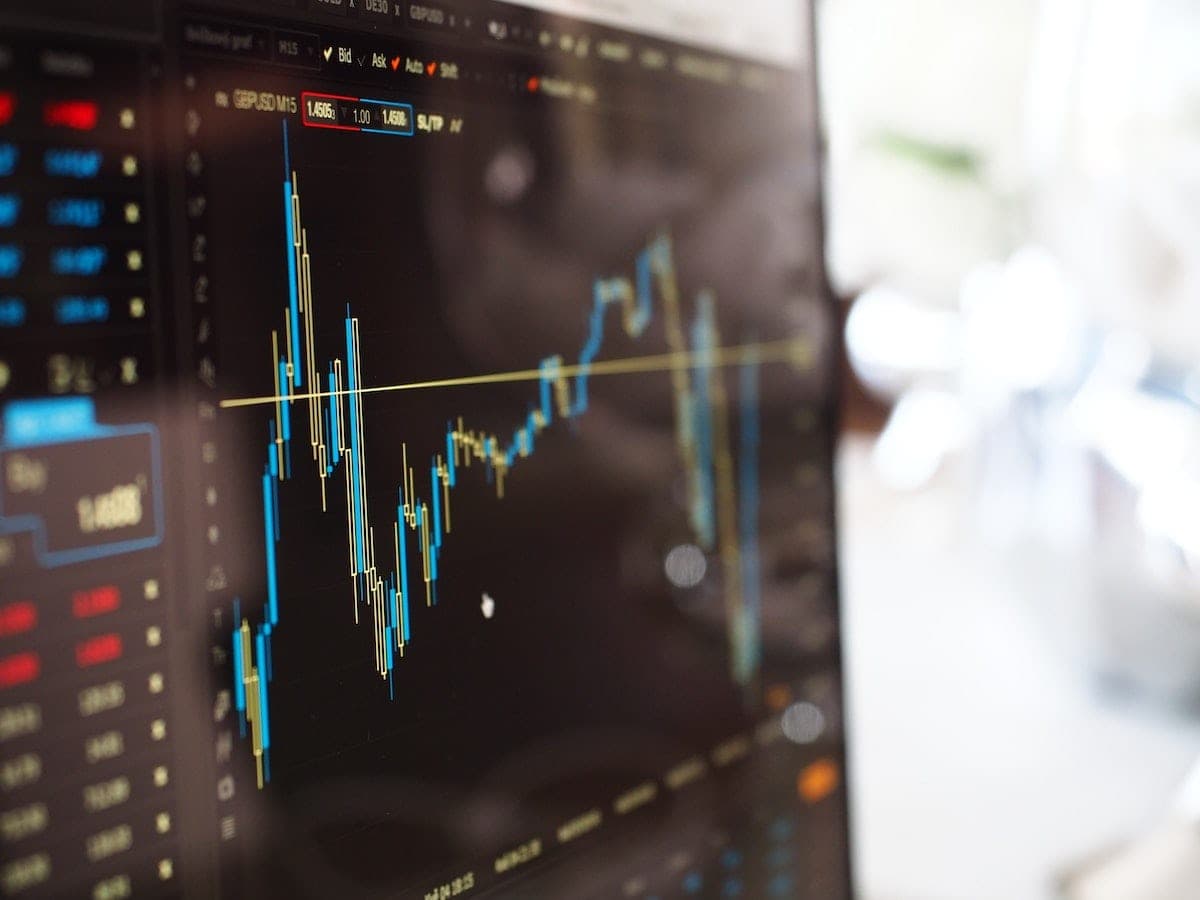The Worst Stock Market Crashes in History – And How to Prepare for the Next One
You’ve probably heard before that those who do not learn from history are doomed to repeat it.
This saying holds true for many things, including investing.
Looking back at stock market crashes in history provides a unique window into what causes the stock market to crash, helping us predict when the next crash might take place.
Let’s take a look at some of the most famous market crashes throughout history and what we can learn from them.
The Biggest Stock Market Crashes in History
1. The Wall Street Crash of 1929
The stock market began right around 1600, and the first stock market crash was soon to follow. However, the Black Tuesday stock market crash that took place in 1929 remains the worst stock market crash in US history.
So, let’s talk about it.
Market Crash Survival Guide
Discover how the proven Rule #1 strategy can help keep your money safe during the next market crash
What happened: Over a four-day period, the Dow Jones dropped 25% and lost $30 billion in market value – the equivalent of $396 billion today. It was this crash that kicked off the Great Depression in the United States.Experts agree that the cause of this crash was largely due to over-optimistic investors.
Just a few years prior to the crash, margin investing was invented, allowing investors to borrow money to buy stocks. This ability combined with a strong bull market led almost everyone to invest without caution, causing the market to rise about 20% a year from 1922-1929. When signs of a bear market started showing, though, the panic was swift and devastating.
What we learned: The danger of over-optimism in a bull market is the primary lesson that can be learned from the Black Tuesday crash. When investors trust the strength of the market without caution, the results are never good.
2. The Stock Market Crash of 1987
What happened: Another one of the biggest stock market crashes in history occurred on October 19, 1987, when the Dow shed 22% in a single day, ending a five-year bull market. It was a drop that came out of nowhere, and experts are still largely in disagreement about what caused the stock market crash.
While there were some ominous signs such as slowing economic growth and rising inflation, there was nothing in the economic climate that would have predicted such a sudden and significant drop.
Surprisingly, the crash only lasted one day, and the market soon climbed back to its highs. However, investors were still left badly shaken by the sudden crash.
What we learned: What the Black Monday crash teaches us is that the market is a fickle beast, and sometimes crashes are almost impossible to predict. It does, however, also teach us a more optimistic lesson as well – the market tends to recover quickly from even the most dramatic crashes.
3. The Tech Bubble Crash of 1999
What happened: The 1990s were a period of rapid technological development, and the commercialization of the internet caused valuations of internet-based companies to soar.
Investors excited about the potential of investing in the “next big thing” threw their money into any company that had “.com” after it without abandon.
However, the hard lesson they soon learned was that most of these companies were doomed to fail.
In March of 2000, large companies began placing sell orders on their tech stocks, causing a panic that led to a 10% drop in the market within a few weeks.
By 2001, the majority of new tech companies – no longer propped up by investor money – disappeared from existence, causing hundreds of millions of dollars of investor money to go to zero.
2025 Investor’s Survival Guide
Learn our proven strategy to protect and grow your portfolio amid inflation, governmental shifts, and unprecedented volatility
What we learned: The importance of carefully evaluating a company you’re going to own – no matter how trendy they might be – is the primary lesson we can learn from the tech bubble crash.
Had investors taken more time to assess these company’s fundamentals, including the management, the moat, cash flow, and other factors rather than blindly hoping they were investing in the next big thing, much of the pain of the tech bubble bursting could have been avoided.
4. The Housing Market Crash of 2008
What happened: This is one you probably remember — the housing market collapse of 2008. Over the course of 2008, the Dow fell almost 34%, and it wasn’t until early 2009 that it began to climb again.
As the name suggests, it was the real estate market that led to this collapse.However, the exact factors at play are complex, and economists disagree over whether the banks or the Fed share more responsibility for the crash.
What we do know, though, is that financial institutions were taking on risky loans thanks to declining foreclosure rates and the fact that the Federal Reserve Bank was keeping the federal funds rate below 2%.
Once real estate prices began to drop and the federal funds rate began to rise, credit in the US froze, leading to an economic collapse.
What we learned: The lesson behind the housing market collapse is that companies are often affected by factors outside their control, meaning that investors must keep an eye on all economic conditions. The real estate market and the stock market are two entirely different markets, yet the collapse of one quickly led to the collapse of the other.
Nevertheless, most high-quality companies survived the crash and soon went on to climb to the highs we see today.
5. The Stock Market Crash of 2020
What happened: One of the most significant crashes in recent memory occurred in 2020, when a decade-long bull market came to a sudden halt due to the onset of the COVID-19 pandemic. While the virus served as the immediate trigger, the crash was exacerbated by market weaknesses that had been building for years, including overvaluations and excessive risk-taking—creating a massive bubble that was ready to burst.
As history has shown, it doesn’t take much for a market to crash—just the right (or wrong) combination of events.
By April 2020, U.S. unemployment had soared to 14.8%, the highest level since the Great Depression. In response, Congress passed the $2 trillion Coronavirus Aid, Relief, and Economic Security (CARES) Act, which helped stabilize the economy and delivered financial relief to millions of Americans.
Investors had several strategic options at their disposal. Many chose to invest their stimulus checks into low-cost exchange-traded funds (ETFs) or individual retirement accounts (IRAs), taking advantage of the market dip. Retired investors also benefited from a temporary suspension of required minimum distributions (RMDs), providing additional flexibility during a turbulent time.
While the CARES Act helped kickstart a rapid recovery in stock prices, the long-term impacts of the pandemic—including supply chain disruptions, labor shifts, and increased national debt—continued to influence the market for years to come.
What we learned: Although the 2020 crash was unique in its catalyst, it followed patterns seen in previous market downturns: excessive optimism, a triggering event, and a rapid sell-off fueled by uncertainty and fear. The lesson? Crashes rarely unfold all at once, but instead reflect deeper vulnerabilities that have been building over time.
The years that followed confirmed what seasoned investors already knew—volatility is inevitable. The Federal Reserve’s continued interventions, pandemic-related policies, and political changes (including a push for increased corporate taxes and national healthcare) contributed to ongoing fluctuations. But high-quality companies with strong fundamentals weathered the storm and ultimately emerged stronger.
What We’re Seeing in 2025: Why Volatility Could Be a Good Thing
As of early 2025, market volatility has returned in a big way—driven by shifting global trade policies, inflationary pressures, and geopolitical uncertainty. Today’s environment reminds us of 2008, with a potential reset of 35–40% in market prices on the horizon. But for patient investors, this isn't a time to panic—it’s a time to prepare. This type of volatility offers an “opportunity for generational wealth” if you’re ready with cash and a watchlist of wonderful businesses.
Rather than trying to predict the exact bottom, we encourage investors to focus on buying wonderful companies on sale and to welcome the stormy “weather” of today’s market as a long-awaited chance to invest at deep discounts.
Stock Market Predictions
As the hopes of ending the pandemic inches closer with each vaccine that is distributed, investors should be prepared for anything. Predictions for the remainder of the year are obscure, but a few things are certain.
One of the biggest determinants that you can use to predict whether or not the stock market will crash is the past. Turn to previous examples of market crashes for evidence of what happened and why it happened.
The good news is you’ve already started your research by reading this post. Continue to rely on history as your trusted guide to learning more about the present market.
And on one final note – always remember to take your time and be patient. Sometimes, the best course of action is to hold back, and instead, wait to see how the market trends.
How Rule #1 Investors Are Preparing for the Next Big Crash
In 2025, we continue to echo Warren Buffett's mantra: Be fearful when others are greedy and greedy when others are fearful. And right now, fear is rising—but not yet peaking. We haven’t seen the full measure of fear enter the markets, and that’s when true buying opportunities emerge.
We caution against rushing into speculative bets or trying to guess market bottoms. Instead, Rule #1 Investors should:
Build and refine a watchlist of wonderful businesses.
Keep capital in short-term money market accounts earning 4%+ while they wait.
Consider using options to reduce basis or generate income.
Stay within their circle of competence and avoid uncertain plays like Chinese stocks or speculative crypto bets.
Most importantly, we recommend preparing emotionally: get comfortable with the idea that your stock could drop 50%, and know that you’ll want to buy more—not sell—in that situation.
Learn from the Worst Stock Market Crashes in History
While market crashes can be intimidating, history shows they also provide the biggest windows of opportunity for disciplined investors. As we head deeper into 2025, many signs point to a major correction—but that doesn’t mean you should sit on the sidelines in fear. Stay ready. Build your watchlist. Learn to value businesses. And when wonderful companies go on sale, move in with confidence. That’s how Rule #1 Investors turn crashes into comebacks.
If you’re worried about stock market crashes, odds are you need to learn a little bit more about how to invest. This Stock Market Crash Survival Guide will help you prepare for the next market crash and help you cash in when the market drops!
Or better yet, come learn alongside our Rule #1 Coaches at the next investing workshop!
Attend a Rule #1 Workshop
Learn how to conduct research, choose the right companies for you, and determine the best time to buy.
**Editor’s Note (Updated April 2025): This article was originally published in 2020 and has been significantly updated in 2025 to reflect current examples and Rule #1 investing insights.

